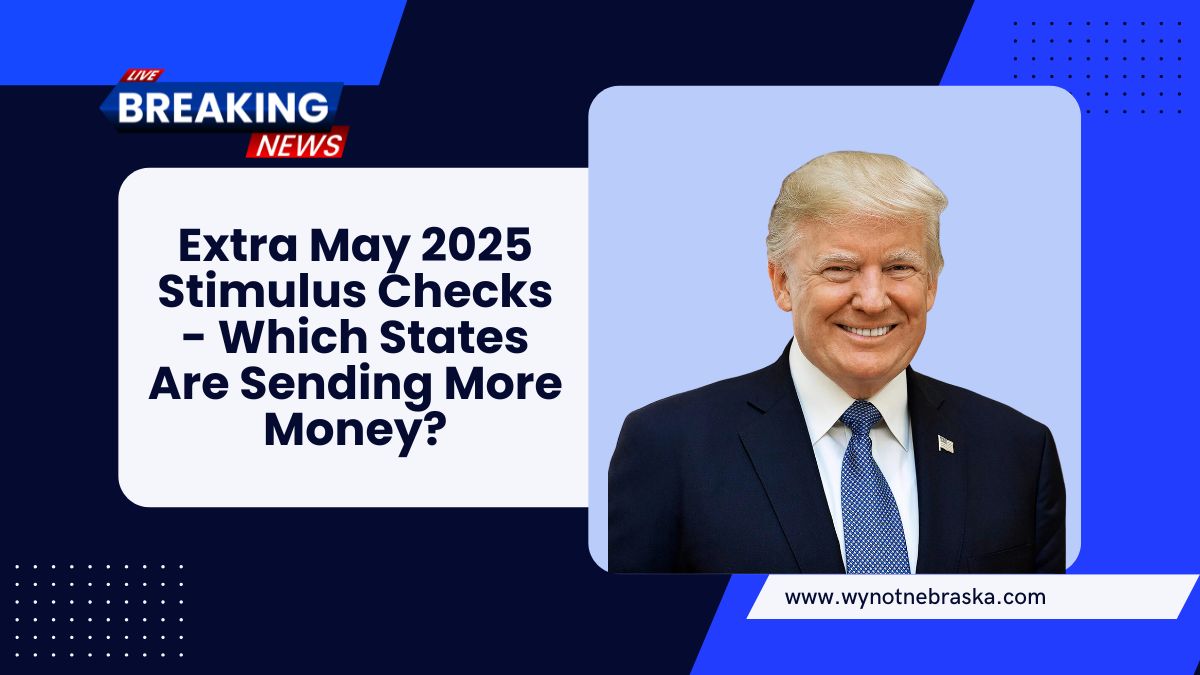As the economic climate continues to challenge households across the U.S., multiple states are stepping in to offer extra financial relief.
While there’s no new federal stimulus check this month, select states are issuing state-funded payments to eligible residents through tax rebates, surplus returns, and guaranteed income programs.
From direct deposits to mailed checks, thousands of Americans are set to receive additional funds in May 2025, depending on where they live and their eligibility status.
State-by-State Stimulus Breakdown
Here is a clear summary of which states are offering extra stimulus payments in May 2025, how much is being offered, and who qualifies:
| State | Program Name | Amount | Who Qualifies | Payout Date |
|---|---|---|---|---|
| Alaska | Permanent Fund Dividend | $1,702 | Full-year 2024 residents; no disqualifying convictions | May 15, 2025 |
| California | Family Support Pilot | $725/month | Low-income families with children under 6 | Begins May 2025 |
| Colorado | TABOR Refund | $800 (single), $1,600 (joint) | 2024 tax filers; residency requirement | March–June 2025 |
| Georgia | Surplus Tax Refund | Up to $500 | 2022 & 2023 tax filers with valid state returns | May–June 2025 |
| Ohio | Guaranteed Income Program | $500/month | Low-income selected participants in local pilot programs | Ongoing monthly support |
| New Mexico | Low-Income Household Relief | Varies | Income-based assistance; application required | Ongoing |
| Pennsylvania | Property/Rent Rebate Program | Up to $1,000 | Seniors, disabled, widows/widowers with income limits | May–June 2025 |
Program Highlights
Alaska – $1,702 PFD Stimulus
Alaska residents who applied and were approved for the Permanent Fund Dividend are scheduled to receive a $1,702 payment on May 15, 2025. This includes a dividend portion and an additional energy relief supplement.
California – $725 Family Monthly Support
California is rolling out $725 monthly payments starting May for families with children under age six in targeted ZIP codes. The program targets economic hardship and child development stability.
Colorado – TABOR Refunds
Colorado’s Taxpayer Bill of Rights (TABOR) refunds are being sent to qualifying 2024 state tax filers. Eligible individuals will receive $800, while joint filers can receive $1,600. Payments are issued in phases through June 2025.
Georgia – Up to $500 Tax Refunds
Georgia is issuing surplus tax refunds for 2022 and 2023 tax filers. Single filers may receive $250, heads of household up to $375, and joint filers up to $500. The payments are expected to go out starting this May.
Ohio – $500 Guaranteed Income
Ohio continues its guaranteed income pilot program that provides $500 per month to pre-selected participants based on financial hardship and location. Payments are deposited directly and continue on a monthly cycle.
New Mexico – Variable Household Relief
New Mexico continues to distribute income-based relief payments. Eligible applicants receive variable amounts depending on household size and income, with deposits being made through May.
Pennsylvania – Up to $1,000 Rebates
Pennsylvania residents who are seniors, widows/widowers, or individuals with disabilities may qualify for the Property Tax/Rent Rebate Program. Approved applicants will receive rebates up to $1,000 during May and June.
With the absence of a federal stimulus this year, these state-level programs are stepping up to fill the gap. From Alaska’s PFD to Georgia’s surplus tax refunds, millions of Americans will receive extra financial support this May.
Whether you’re a low-income household, a senior renter, or a working family, your state may have funds allocated for your needs.
It’s essential to stay informed, file your taxes on time, and apply promptly for any program that requires enrollment. These payments could provide the relief many households need to cover essentials or catch up on bills in today’s inflationary environment.
FAQs
Are these stimulus checks coming from the federal government?
No. These are state-funded payments, initiated independently by each state government to support residents facing economic pressures.
How can I check if I’m eligible for a payment in my state?
Check with your state’s tax agency or benefits department. Eligibility usually depends on residency, income, age, and tax filings.
Will the payments come as a check or direct deposit?
It varies by state. Some send checks by mail, while others issue direct deposits to bank accounts on file with tax returns.

